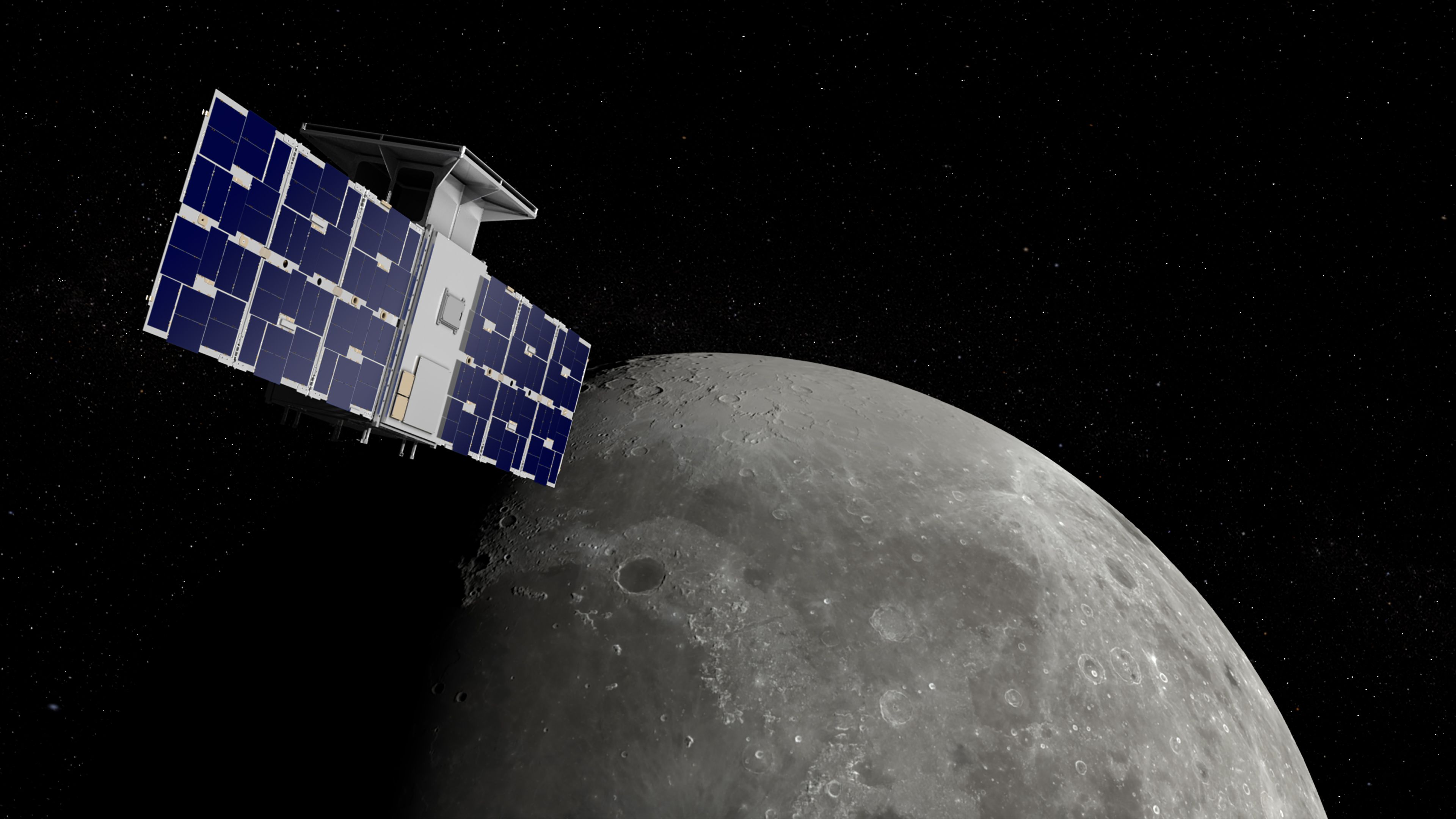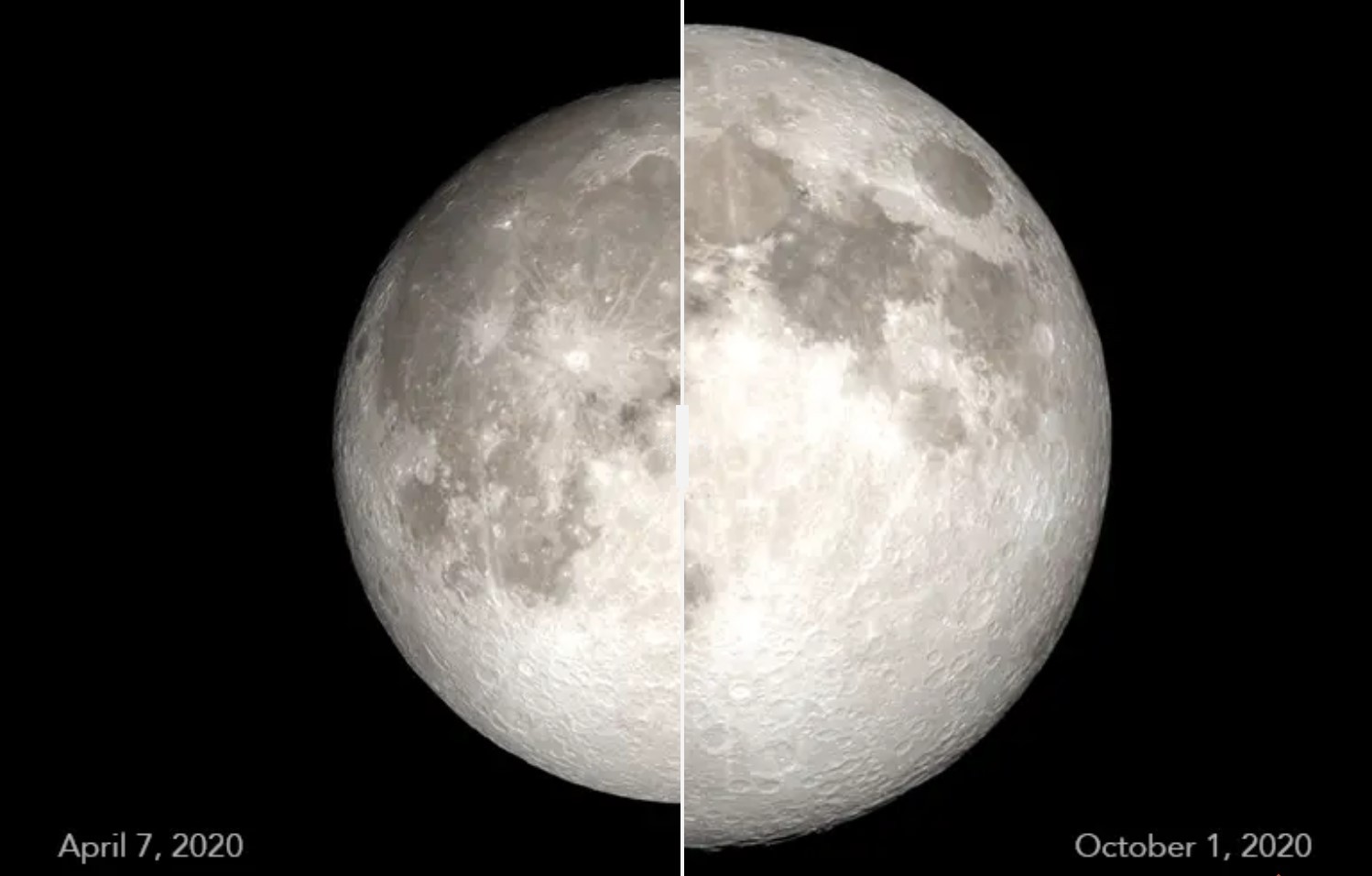NASA-funded CAPSTONE moon mission seeks to go where no cubesat has gone before
CAPSTONE aims to simulate the orbit for NASA's Gateway space station.

A cubesat mission has a big objective to verify a keystone of NASA's future lunar operations.
CAPSTONE, short for "Cislunar Autonomous Positioning System Technology Operations and Navigation Experiment," will occupy an orbit around the moon that has never been used before, to test out the Gateway space station's path to support future Artemis astronauts on the lunar surface.
NASA officials held a press conference and status update on the mission Wednesday (May 25) following news that the CAPSTONE mission will launch no earlier than June 6. The window extends through June 22. (It's not CAPSTONE's first delay; the cubesat was originally supposed to launch in 2021, but COVID-related issues pushed back the schedule to 2022, and it has also been delayed slightly a few times this year.)
CAPSTONE is scheduled to launch from New Zealand aboard a Rocket Lab Electron rocket equipped with a Lunar Photon upper stage. The microwave-oven-sized spacecraft's mission is to settle into a near rectilinear halo orbit (NRHO) around the moon.
Related: Rocket Lab and its Electron booster (photos)
CAPSTONE will verify the stability of the orbit, which can be affected by mass concentrations (mascons) near the moon's surface and other factors. NASA is keen to get such information before launching the the high-profile Gateway space station to a lunar NRHO later in the 2020s.
"Beyond our support of the Artemis program, part of what makes this mission compelling from from my perspective is how it is pushing forward our desire to increase the pace of space exploration," Christopher Baker, small spacecraft technology program executive at NASA's Space Technology Mission Directorate, said during Wednesday's press conference.
Get the Space.com Newsletter
Breaking space news, the latest updates on rocket launches, skywatching events and more!
Baker noted that CAPSTONE is built and managed by commercial partners; the nearly $14 million mission's project management is led by Colorado company Advanced Space. He said that involving commercial space in a lunar-class mission is "helping support not just our major human exploration program but also helping us expand the capability of small missions to reach new destinations."

CAPSTONE's NRHO will take the cubesat within 1,000 miles (1,600 kilometers) of the lunar surface near the south pole at its lowest point, and as high up as 43,500 miles (70,000 km).
The low approach to the moon will eventually allow access for astronauts to land on the surface and to return to Gateway, provided that the orbit is verified as desired. An NHRO also allows for efficient fuel usage, which is useful for a tiny cubesat, along with eclipse-free operations allowing the solar-powered Gateway to receive continual sunlight, Bradley Cheetham, Advanced Space CEO and principal investigator of CAPSTONE, said during the press conference.
The only other projects to attempt any three-body orbits around the moon include China's Chang'e 4 mission to the moon's far side and a previous robotic NASA mission called (somewhat confusingly, as Cheetham noted) ARTEMIS.

The older ARTEMIS stands for "Acceleration, Reconnection, Turbulence and Electrodynamics of the Moon's Interaction with the Sun." The mission was repurposed from two of five spacecraft used for a NASA heliophysics constellation of satellites called THEMIS, which operated between 2007 and 2010.
Two spacecraft, renamed ARTEMIS-P1 and ARTEMIS-P2, tested out station-keeping around Lagrange points (gravitationally stable points between bodies) near the moon. Cheetham was working at NASA's Goddard Space Flight Center in Maryland during that period and said that the mission inspired him to enter graduate school for a Ph.D.
"That mission started the passion that I had for these unique orbits, that really led to the growth of these ideas and, ultimately, the CAPSTONE mission," Cheetham said.
CAPSTONE mission team members aim to verify predicted fuel usage in the NRHO, as well as how well ground navigation does in terms of tracking the cubesat, he noted.
"We have a great idea how that works in a lab here in Denver. We need to figure out how it works on a spacecraft at the moon, and there's a lot of nuance of those signals," Cheetham said.
CAPSTONE also aims to test spacecraft-to-spacecraft navigation and communications systems with NASA's Lunar Reconnaissance Orbiter (LRO), which has been circling the moon since 2009. This is no small challenge, given that LRO was not designed to do such communications when it was launched.
Cheetham said he has been talking with NASA Goddard to learn how to make this happen, which has yielded "tremendous learning on what those future systems will need to be like, so that we can have spacecraft at the moon talking to each other."
These future "peer-to-peer networks" would allow spacecraft to exchange vital information on positions and status and grow their capabilities from there, he said.
Whenever it launches next month, orbital dynamics dictate that CAPSTONE will arrive at the moon on Oct. 15, with more or less time spent in transit depending on its departure date from Earth.
The cubesat is scheduled to operate in its orbit for at least six months, although opportunities are available for extensions assuming the spacecraft remains healthy and it produces viable science or engineering to allow for extra funding for a mission extension.
Follow Elizabeth Howell on Twitter @howellspace. Follow us on Twitter @Spacedotcom and on Facebook.
Join our Space Forums to keep talking space on the latest missions, night sky and more! And if you have a news tip, correction or comment, let us know at: community@space.com.

Elizabeth Howell (she/her), Ph.D., was a staff writer in the spaceflight channel between 2022 and 2024 specializing in Canadian space news. She was contributing writer for Space.com for 10 years from 2012 to 2024. Elizabeth's reporting includes multiple exclusives with the White House, leading world coverage about a lost-and-found space tomato on the International Space Station, witnessing five human spaceflight launches on two continents, flying parabolic, working inside a spacesuit, and participating in a simulated Mars mission. Her latest book, "Why Am I Taller?" (ECW Press, 2022) is co-written with astronaut Dave Williams.









